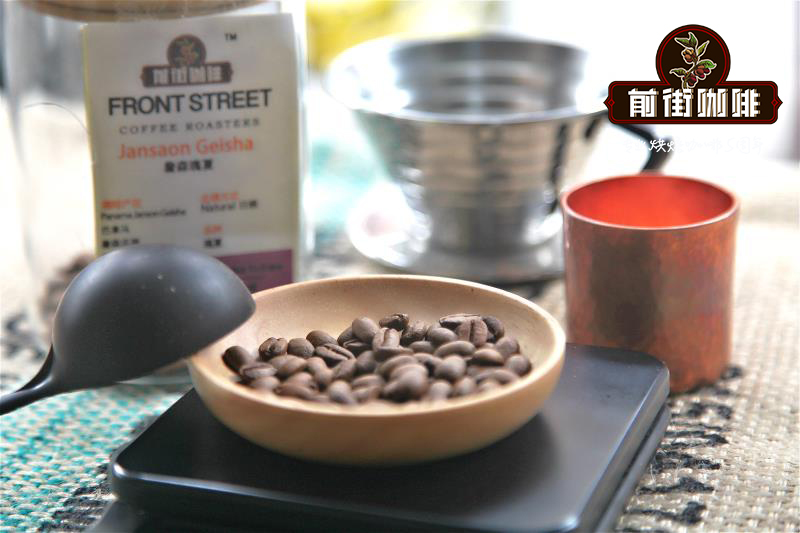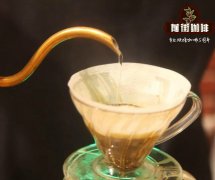Which is better, hand coffee or siphon coffee? Comparison of hand flushing and siphon cooking techniques

Professional coffee knowledge exchange more coffee bean information please follow the coffee workshop (Wechat official account cafe_style)
Some time ago, a friend asked, what's the difference between hand-brewed coffee and siphon coffee? What's the difference between drinking it? Let's take a look today. What's the difference between hand-brewed coffee and siphon coffee?
First of all, let's find out what is hand-brewed coffee. What is siphon coffee?
| | hand-brewed coffee |
In recent years, the word hand-brewed coffee has always been heard in many coffee shops, and the barista at the bar has a sense of ritual when making hand-made coffee. But to put it bluntly, hand-brewed coffee is to pour hot water on the coffee powder and extract the coffee through filter paper and filter cup. However, according to different filter cups, different cooking parameters and cooking methods, the flavor is different, paying attention to techniques and skills, it can be said that the playability is very high.
Hand-brewed coffee is mainly brewed by filter, so it requires a little higher manipulation, water temperature, grinding and other factors, because it is filtered with filter paper, so the flavor is cleaner, and the coffee liquid looks very clear.
| siphon Coffee
Brewing coffee in a siphon pot gives a high-end feeling, just like doing an experiment in a laboratory. The main principle of coffee extraction in the siphon pot is realized through the pressure difference. First, the lower cup of water is heated to boiling, and then inserted into the upper pot, so that the lower pot is in a state of high pressure. Due to the pressure difference between the lower pot and the upper pot, the hot water is mixed with the upper pot coffee powder and extracted. After the extraction process, the fire source of the lower pot is removed, so that the pressure difference between the lower pot and the upper pot is instantly reduced. The siphon between the upper pot and the lower pot will cause the coffee extract to return to the lower cup.
The siphon pot is mainly soaked, so the coffee brewed will be more balanced and mellow. Because it is filtered with flannel, unlike the filter paper, flannel filtration retains a little grease, and a thin layer of grease can be found on the surface of the coffee liquid carefully, which is why it tastes smoother.
So what are the characteristics of the coffee made by the way these two kinds of coffee are made? So we made a pot with [Yemeni mocha] by hand flushing and siphoning respectively.
Hand coffee parameters: V60 filter cup, grinding degree is BG 5R (Chinese standard No. 20 sieve 64%), water temperature is 89 ℃, ratio of powder to water is 1:15, (steaming starts) total time is 2 minutes 39 percent 01 "
Technique: 26 grams of water steaming for 30 seconds, water injection to 125 grams section, when the water level gradually exposed the powder bed, continue to inject water to the end of 226 grams, water level drop is about to expose the powder bed to remove the filter cup.
Siphon parameters: grinding degree BG 6A (55% pass rate of Chinese standard No. 20 screen), water temperature 87 ℃, powder / water ratio 1:13, total time 1: 10 "
Technique: when the water arrives in the pot, pour the powder into the pot, stir the cross twice after adding the powder, stir five times in a circle after 35 seconds, remove the fire source after 50 seconds, remove the fire source, wipe off the pot with a semi-wet rag and let the coffee liquid flow back.
Hand-boiled Yemeni mocha, the entrance will have a bright but soft and round grape acidity, the aftertaste is dark chocolate, the flavor is rich.
The Yemeni mocha boiled by siphon has a relatively mellow taste, clear and balanced flavor, with soft and round fruit acid, grape and red berries in the mouth, dark chocolate flavor and long-lasting caramel.
The editor believes that the biggest difference between hand-brewed coffee and siphon coffee is probably the difference in alcohol thickness and balance. The coffee brewed from the siphon pot will have a mellow taste and a more balanced feeling as a whole, while the coffee brewed by hand may be slightly better at the flavor level. Which tastes better? It depends on which style of coffee you like. Still, as the old saying goes, it all depends on the individual.
Important Notice :
前街咖啡 FrontStreet Coffee has moved to new addredd:
FrontStreet Coffee Address: 315,Donghua East Road,GuangZhou
Tel:020 38364473
- Prev

Is Arabica coffee really the best? Do you usually drink Arabica coffee?
Professional coffee knowledge exchange more information about coffee beans please follow the coffee workshop (Wechat official account cafe_style) Arabica coffee bean types of taste. It is a feeling caused by direct chemical stimulation, which is composed of sour, sweet, bitter and salty tastes, which refers to the ability to feel the taste of substances. Enter through the mouth and feel the taste carefully through the tongue
- Next

Handmade coffee tastes better than American coffee? What is the difference between hand-brewed coffee and American style?
Professional coffee knowledge exchange more coffee bean information Please follow the coffee workshop (Wechat official account cafe_style) I do not know if my partner has ever encountered such an experience, when you enter a boutique cafe and want to order a cup of black coffee, the barista asks you, would you like American coffee or handmade coffee? Black question mark face? I just want a drink.
Related
- Beginners will see the "Coffee pull flower" guide!
- What is the difference between ice blog purified milk and ordinary milk coffee?
- Why is the Philippines the largest producer of crops in Liberia?
- For coffee extraction, should the fine powder be retained?
- How does extracted espresso fill pressed powder? How much strength does it take to press the powder?
- How to make jasmine cold extract coffee? Is the jasmine + latte good?
- Will this little toy really make the coffee taste better? How does Lily Drip affect coffee extraction?
- Will the action of slapping the filter cup also affect coffee extraction?
- What's the difference between powder-to-water ratio and powder-to-liquid ratio?
- What is the Ethiopian local species? What does it have to do with Heirloom native species?

